You may have the most expensive guitars in the world, all the microphones you'll ever need and the best laptop or computer for music production. However, without the best audio interface, your recording results are going to be below par.
Simply put, an audio interface converts the sound coming from your instrument or microphone and turns it into the language your computer can understand. This language facilitates the interpretation of audio data by your recording software, otherwise known as a Digital Audio Workstation (or DAW for short.) Therefore, an audio interface quite significantly influences your audio quality by integrating various elements that enhance authenticity and fidelity whilst recording.
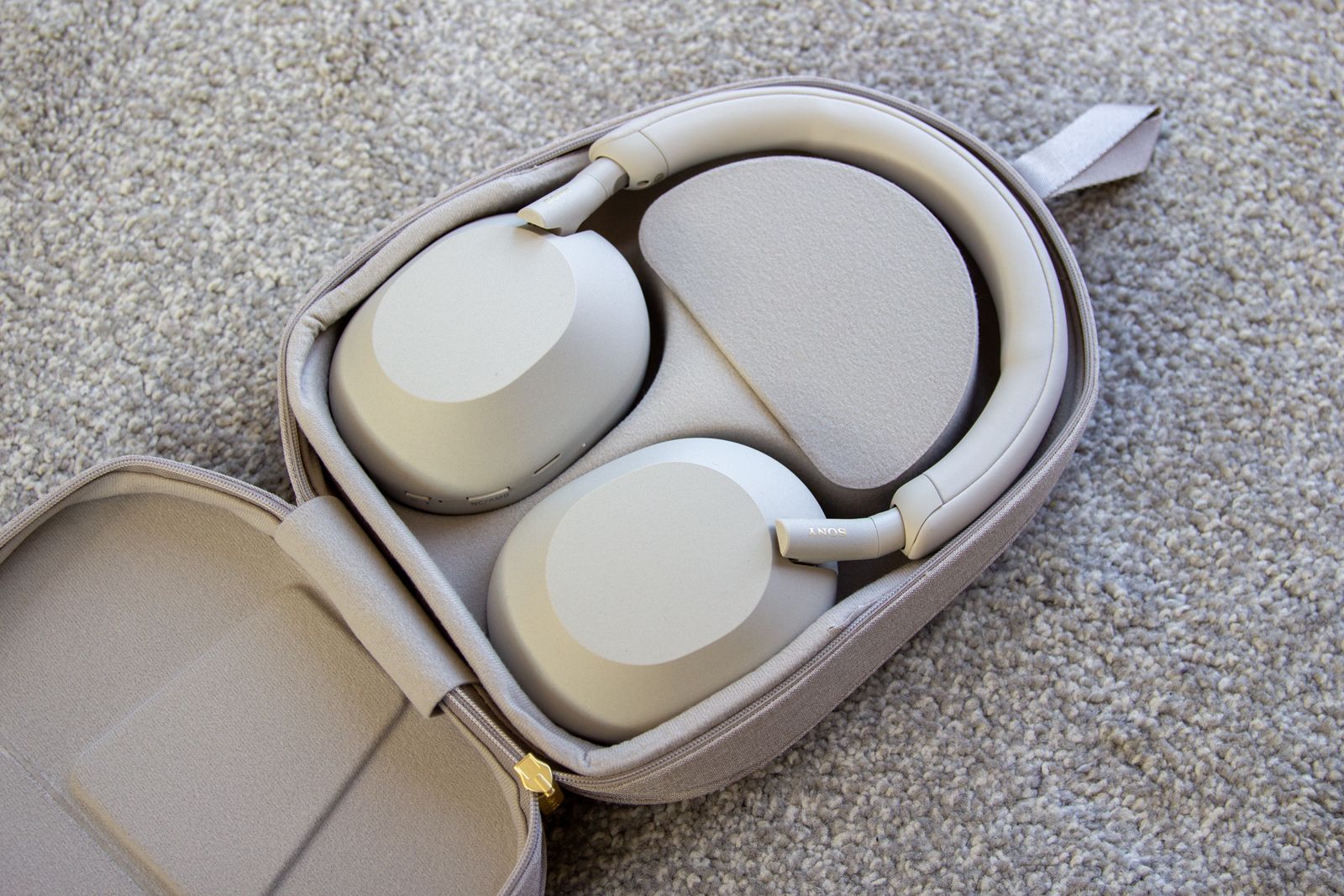
Best noise cancelling headphones and earbuds: Audiophile tested and reviewed
According to our in and on-ears listening, these models from Apple, Bose, Sony, and more top the market in quality, quiet, and comfort.From single-input pocket-sized interfaces ideal for streaming to multiple DSP-powered professional interfaces that are strong enough for near-zero latency, there are plenty of options to choose from. And your choice will likely depend on your desired usage and budget, and having spent the last few years working in the music industry and going hands-on with music technology, I've selected the six best audio interfaces currently on the market, starting with our first choice, the Universal Audio Apollo Twin X, which thrives when it comes to preamps and clear recording quality. Read on for more.
Best audio interfaces: Our top picks
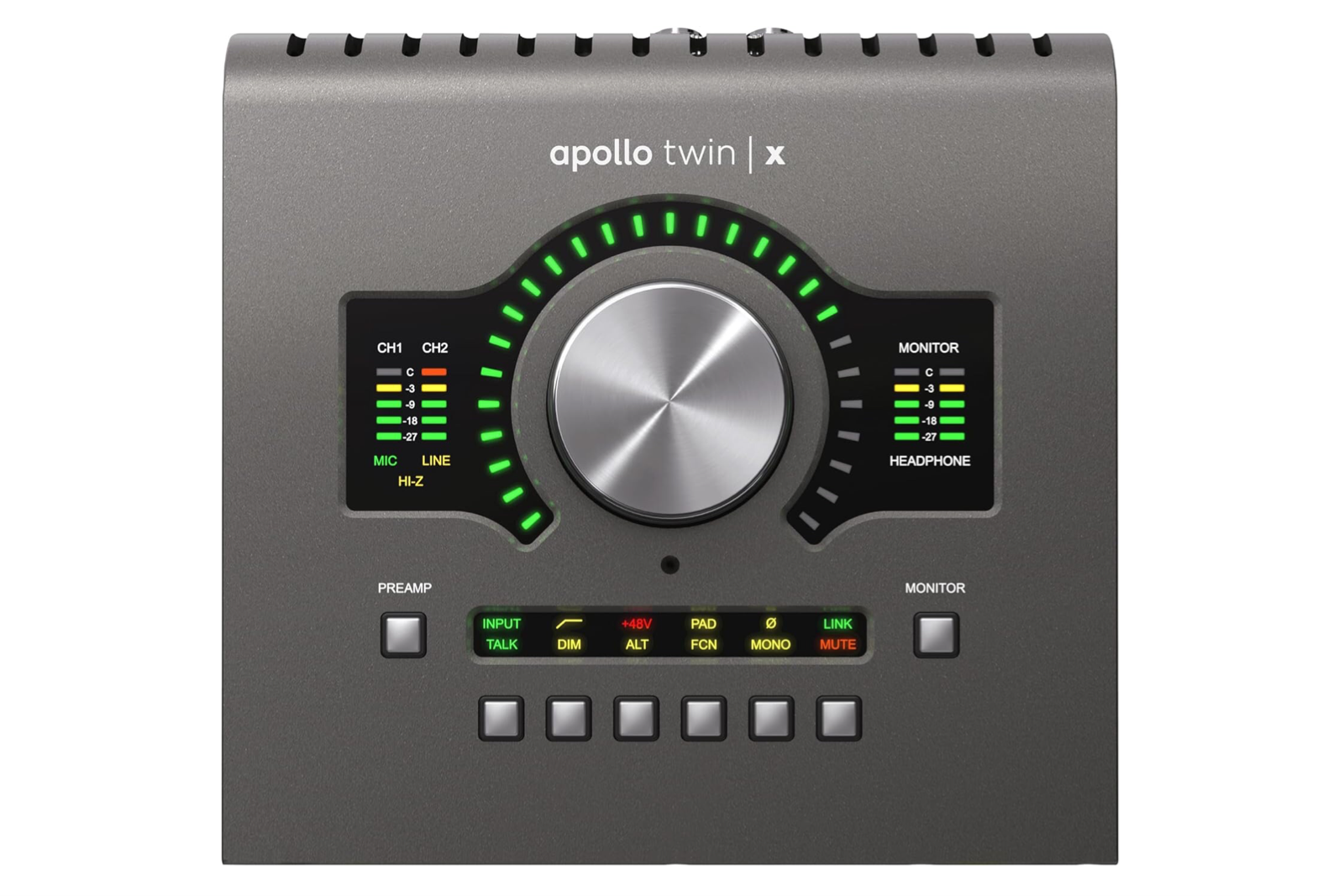
Universal Audio Apollo Twin X
Universally loved
Universal Audio claim our top spot with the fantastic Apollo Twin X interface. Borrowing elite-class A/D and D/A conversion from their rack-mounted interfaces and offering heaps of free software, for fantastic home recording, look no further.
- Sublime recording quality
- Fantastic preamps
- Included LUNA software is an excellent bonus
- Some may need MIDI inputs
Universal Audio's Apollo Twin X isn't the most budget-friendly option on our list - costing around $1000 - but it is certainly the best. The California brand is steeped in musical recording tradition, having been founded by engineer Bill Putnam Sr., a favorite of Nat King Cole, Frank Sinatra and Ray Charles - to name but a few. The company was resuscitated by Putman's sons in 1999 and has been the first choice of recording professionals across the globe.
The Apollo Twin X is perhaps the first choice for those looking for an outstanding audio interface. Borrowing the elite-class A/D and D/A conversion from UA's rack-mounted interfaces and having plenty of classic mic preamps available, its recording quality is mostly unrivaled. Although there are only two line inputs on the Apollo Twin X, if you need more, the optical ADAT/SPDIF output can allow for up to eight additional connections.
There is also a plethora of fantastic plug-ins UA gives you for free alongside the interface, which accumulates to over $1300 if you were to buy them separately. Plug-ins like the UA 610-B Tube Preamp & EQ, Teletronix LA-2A tube compressor and famous amps from brands like Marshall and Ampeg will get you sounding professional immediately. Now, don't get us wrong, this probably isn't the most practical interface for a beginner, but if you're serious about recording, accept no substitutes.
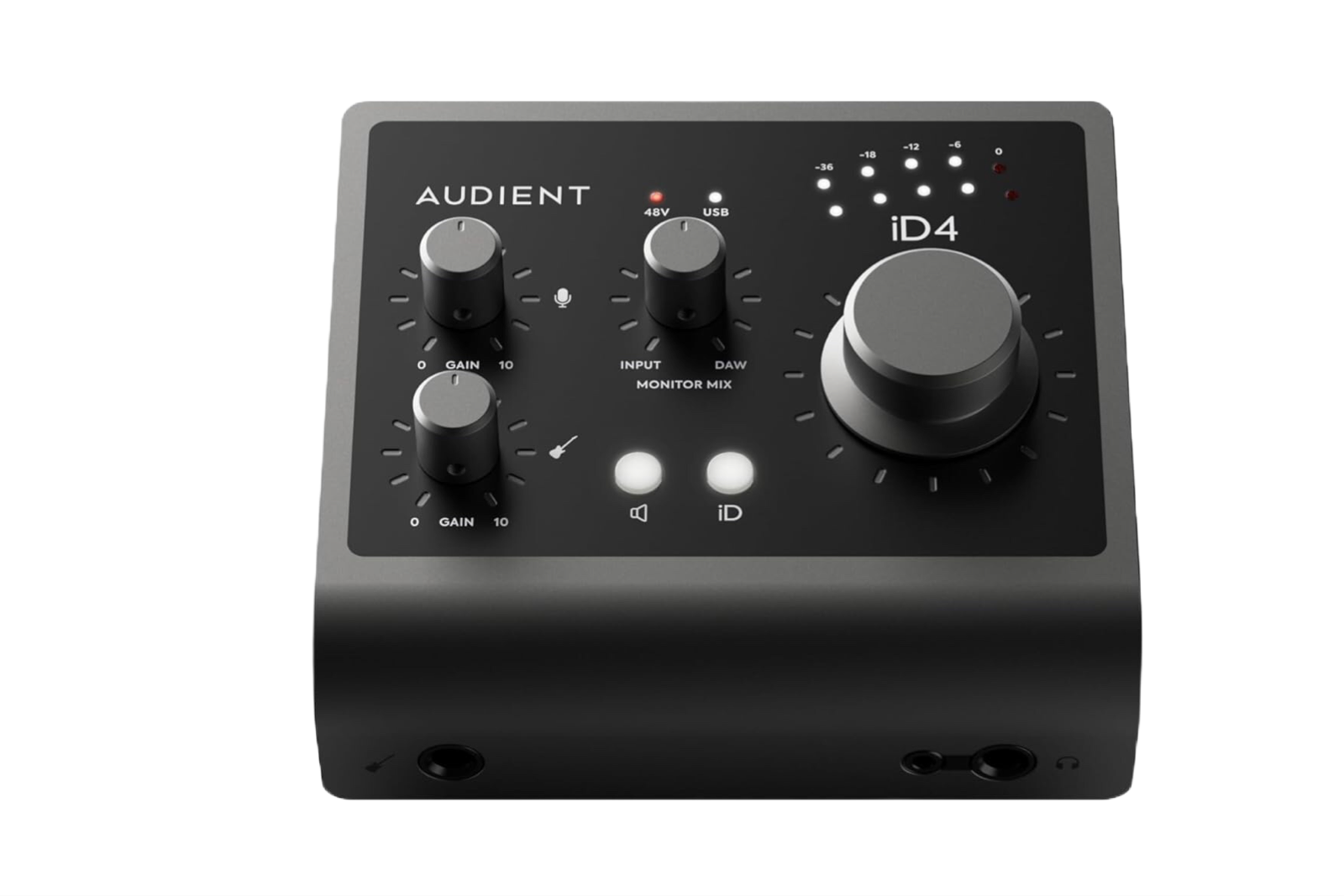
Audient iD4 MKII
A more affordable audiophile experience
The Audient iD4 MKII is a serious contender as it delivers an audiophile experience at an affordable price point. Audient's tried and tested mic preamp circuit design taken from its high-end ASP8024-HE console and the JFET instrument input deliver both incredibly clean and natural recording audio.
- Fantastic preamp
- Robust and portable
- Great value for money
- USB-C output won't suit every setup
Audient is an English company which has been creating professional and studio quality mixing consoles and preamps since 1997. The company initially forayed into the world of audio interfaces in 2013 and hasn't looked back since. Over the last decade, few products from Audient rival the quality of the iD4 MKII interface.
Although a pretty simple 2-in-2-out interface, don't let its unassuming appearance put you off. This little thing is capable of 24-bit / 96kHz sample rate recording and has a 48V phantom power switch for any potential condenser microphones you're planning on using. The MKII has been upgraded to operate with a high-powered USB-C connection, offering a more consistent output and performance. This improved performance also helps the headphone amp, which is capable of driving headphones up to 600 Ohms.
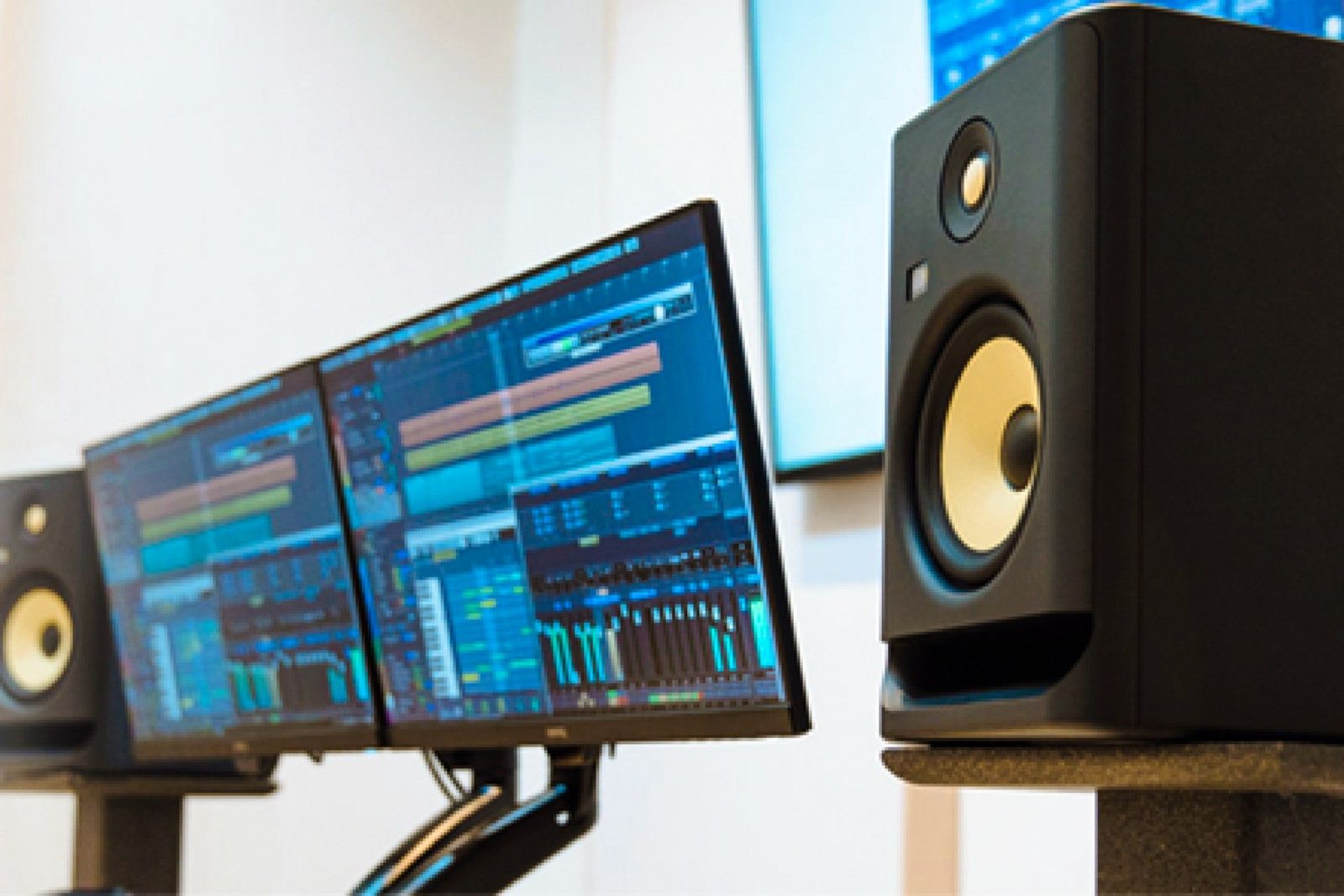
Best studio monitors for music production: 6 studio speakers for musicians, producers and artists
From Yamaha to Genelec, these are the best studio monitors whether you're a fresh faced rookie or seasoned studio hand.However, the stars of the show are the mic preamp and instrument input. The mic preamp design circuit has been modeled on Audient's high-end ASP8024-HE console and offers extremely clear, low-distortion audio with 58dB of quiet gain. The JFET-designed instrument input is also very pleasing, doing a truly authentic job of delivering a punchy audio recording that hits all the correct notes.
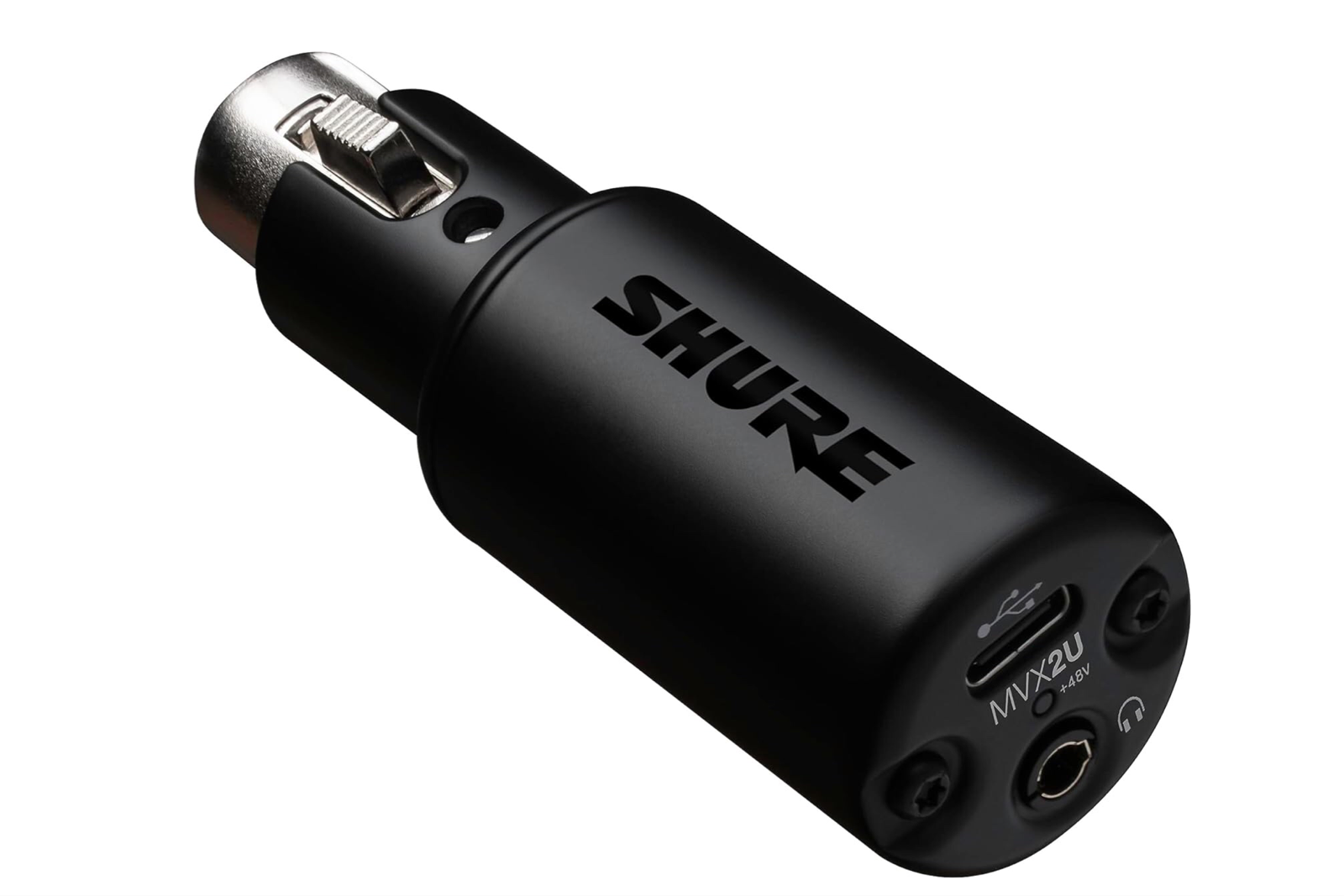
Shure MVX2U
We're Shure you'll love this
If you're after an interface to boost your live stream or podcast game, they don't come much more convenient than the Shure MVX2U. A pocket-sized XLR-USB interface, this is the ideal option if you need something sleek and simple to use.
- Incredibly compact and portable
- ShurePlus desktop app is a bonus
- Phantom power available
- Not exactly versatile
Now, the Shure MVX2U isn't going to be the first option if you need multiple combination jack inputs for the utmost versatility for multi-instrument simultaneous recording. However, if you live stream, or enjoy recording podcasts in your spare time, it's an incredibly handy interface.
The MVX2U is a single channel, XLR-USB interface that has been specifically designed to simply connect any microphone to your computer. This little guy packs a punch and offers 60dB of clean gain, which is fantastic for a device this size. Perhaps more impressively, it also has 48V of phantom power, meaning your condenser microphone will work equally well.
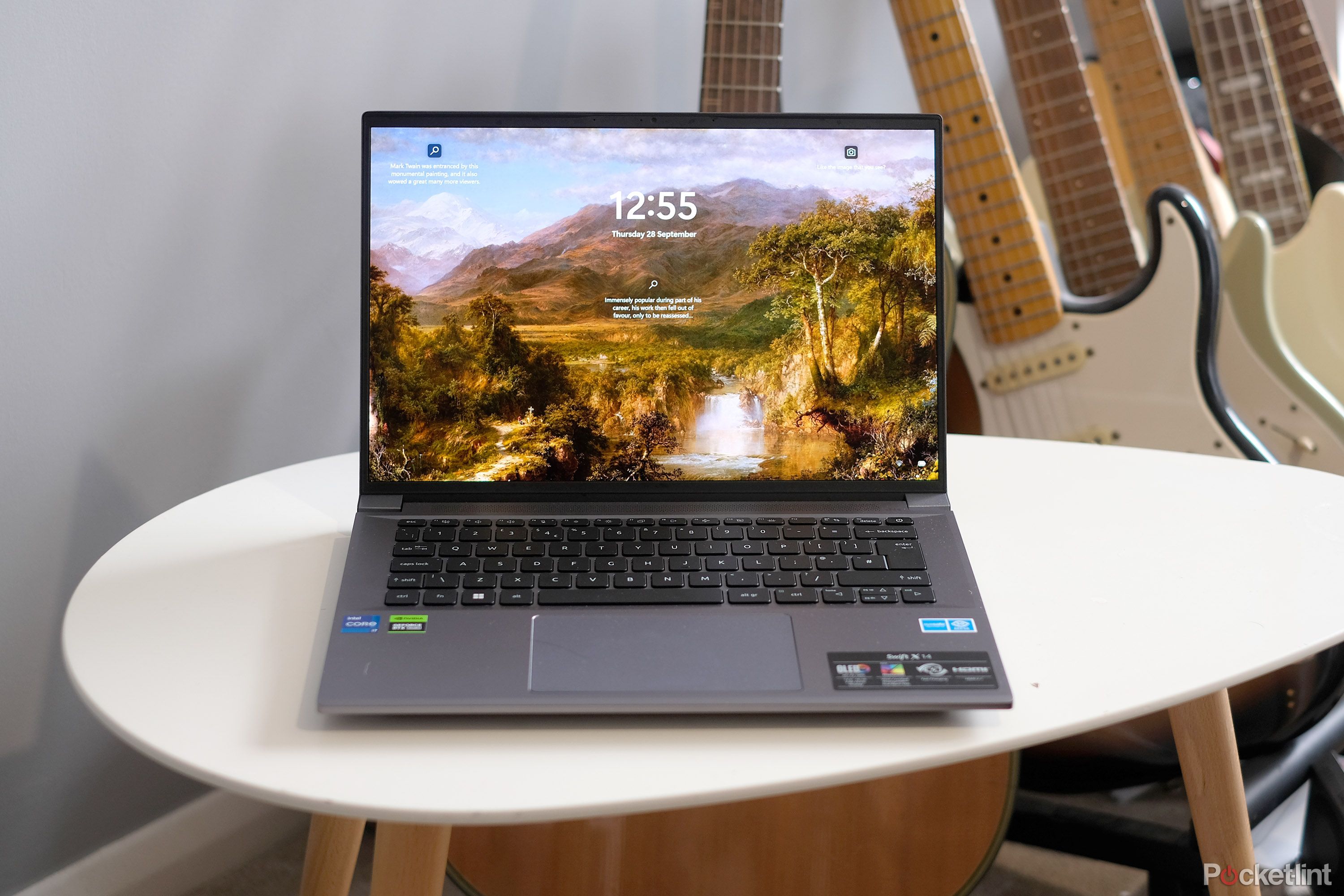
6 best laptops for music production: Expert tested and reviewed
From Apple to Dell, our audiophile pros tested and ranked the best laptops for music makers.The tech doesn't stop there as the MVX2U utilizes configurable DSP features which can be selected and controlled through the ShurePlus MOTIV Desktop App. To ensure extended longevity, this intelligent interface allows for firmware updates through online releases by Shure, enabling users to access improvements as they become available. So if you're after a minimal-fuss, robust and portable little interface to improve your podcasts or live streams, there's no better option than the Shure MVX2U.
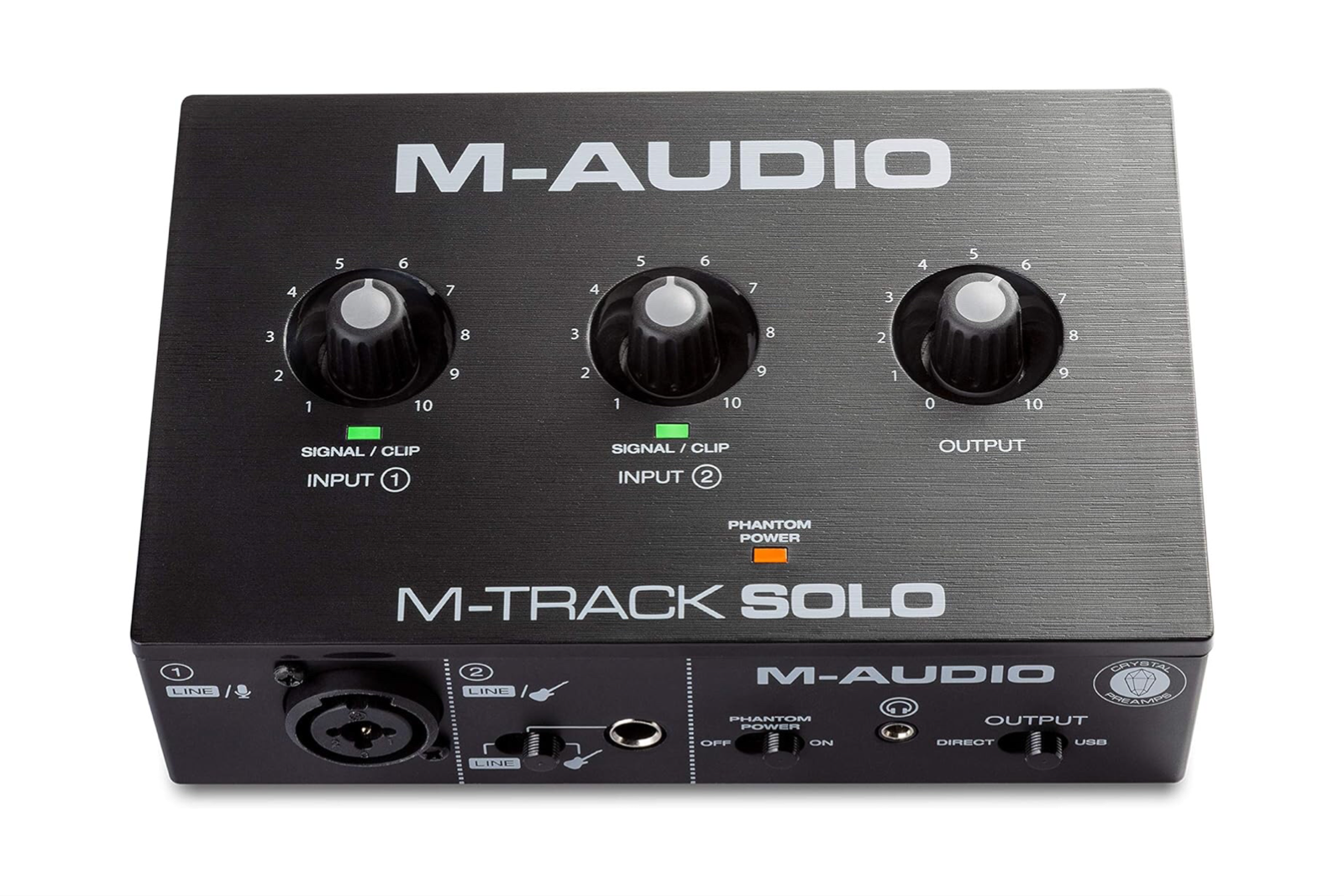
M-Audio M-Track Solo
Great for beginners
Costing under $50, there's a lot to like about this budget-friendly and compact interface. Additionally, it's a great option for a newbie looking to dip their toes into the world of home recording.
- 48kHz audio resolution is great for the price
- Combination jack input is versatile
- Pretty transparent preamp
- No MIDI connections
M-Audio is known for its fantastic value for money. With a plethora of affordably fantastic products ranging from MIDI controllers to microphones, they have quickly become a staple on the music tech scene. However, it's the company's interfaces we are looking at today and the M-Track Solo interface is one of the best low-price options out there.
The M-Track Solo offers both a combination jack input, ideal for microphones, and a 1/4-inch jack input, for your guitar, piano or any other instrument. Both inputs can be used simultaneously and the Crystal preamp does a fantastic job of keeping noise to a minimum, by far exceeding our expectations. Although there are others on our list which offer slightly better resolution than 48kHz, you really can't grumble at that quality for this price.
Like most modern interfaces, the M-Track Solo is completely USB-powered, so if you've got your eye on a portable interface for travel, this thing would be the perfect companion. Additionally, it comes with 48V phantom power. Although one drawback to note is the lack of MIDI connections available on the M-Track Solo, if you're looking for a portable and capable interface, it's still a great option.
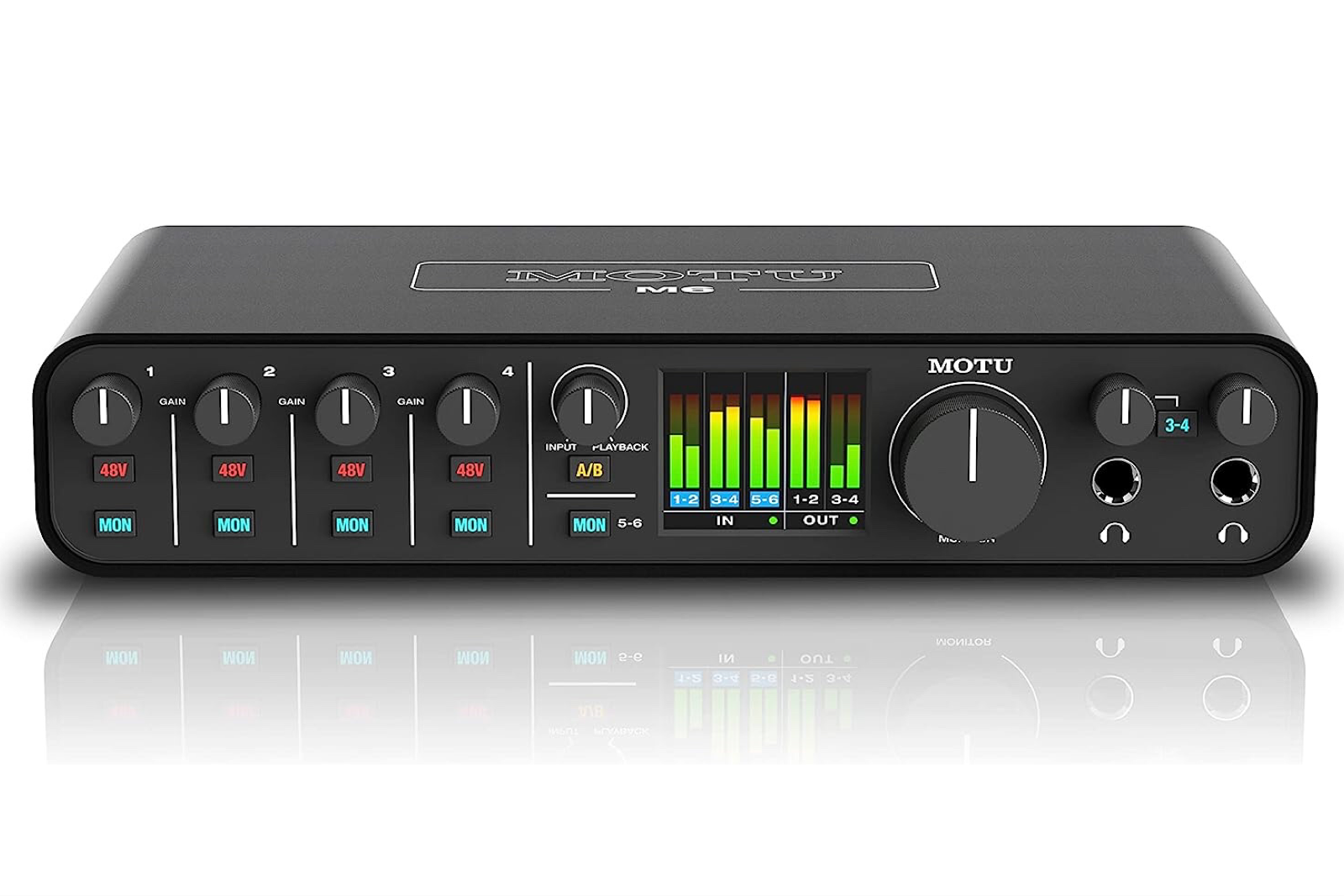
MOTU M6 6x4
Practically the "unicorn" of the audio interface market
The MOTU M6 6x4 is likely to have all the connectivity options you'll need, and yes, it has MIDI inputs. For all of you vintage synth nerds out there, the M6 6x4 has you covered. The additional LCD monitoring screen is a nice touch and there are plenty of audiophile grade features packed in.
- Incredibly low latency monitoring
- LCD screen provides detailed leveling
- ESS Sabre32 Ultra DAC Technology is premium
- May be overkill for some
The MOTU M6 6x4 interface packs in multiple ports and a great LCD screen for detailed leveling. MOTU, otherwise known as Mark of The Unicorn, has been making music software and hardware from Cambridge, Massachusetts since the mid-80s and is starting to gain an international reputation.
With traditional MIDI connections, four combination jack inputs, and a line-in, this is really all you're likely to need as an amateur. This interface is fantastic for precise monitoring, the ultra-low 2.5 ms Round Trip Latency is pretty much perfect and lag is a thing of the past.
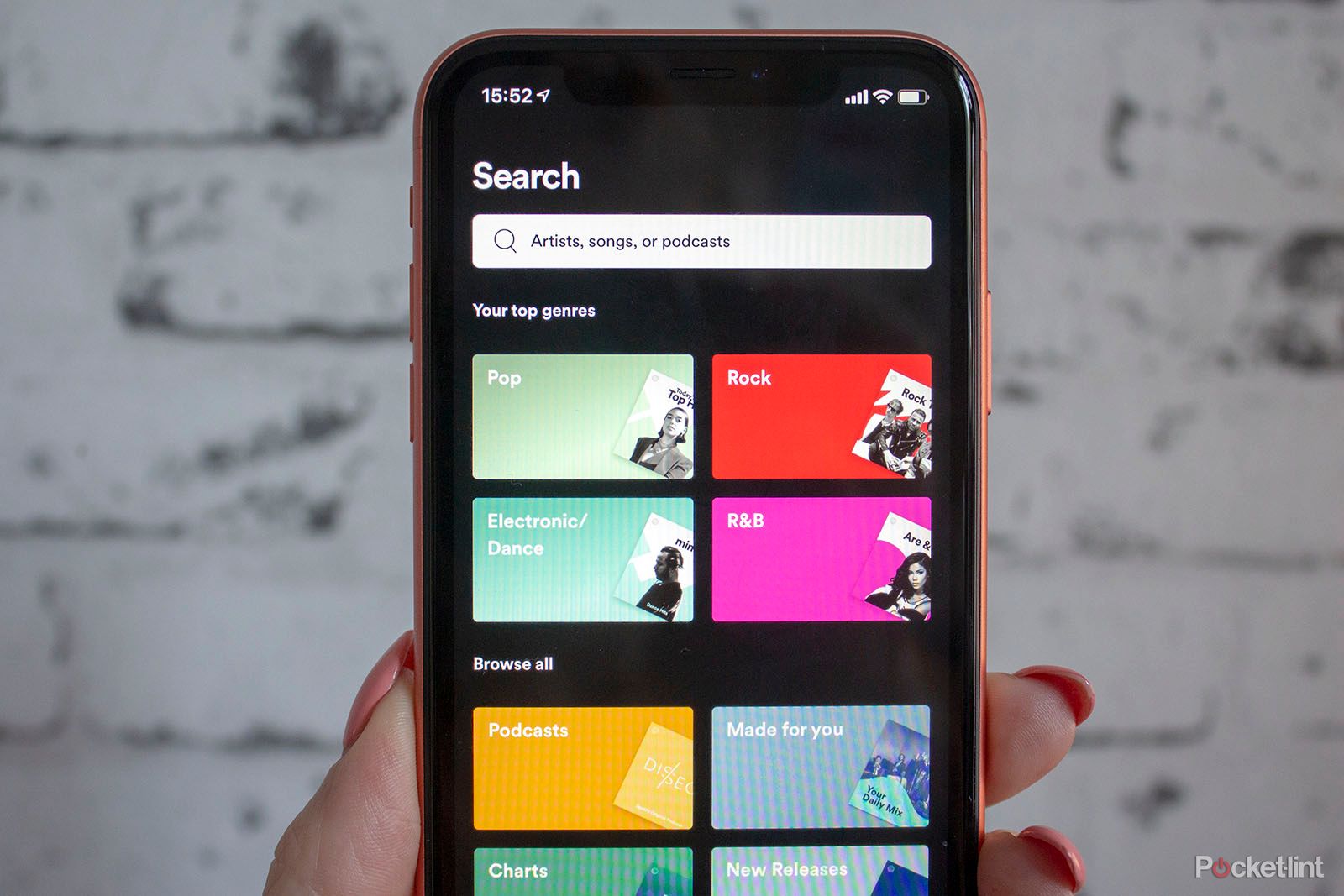
5 Spotify tips to help you get the most out of your Premium subscription
Whether you're new to the service or want to get your money's worth, these features match music to your mood, build your catalog, and more.The interface's full-color LCD monitoring screen is impressively accurate and incredibly handy for keeping an eye on levels. It's quite a unique feature to find at this level of interface.
When it comes to audio quality, the M6 doesn't hold back. Equipped with ESS Sabre32 Ultra DAC technology, the dynamic range of this interface is a fantastic 120dB and the preamps are exceptionally clear. With such clear preamps, it's essential for the source (you) to ensure good audio input; there's no place to hide with the MOTU M6 6x4 interface.
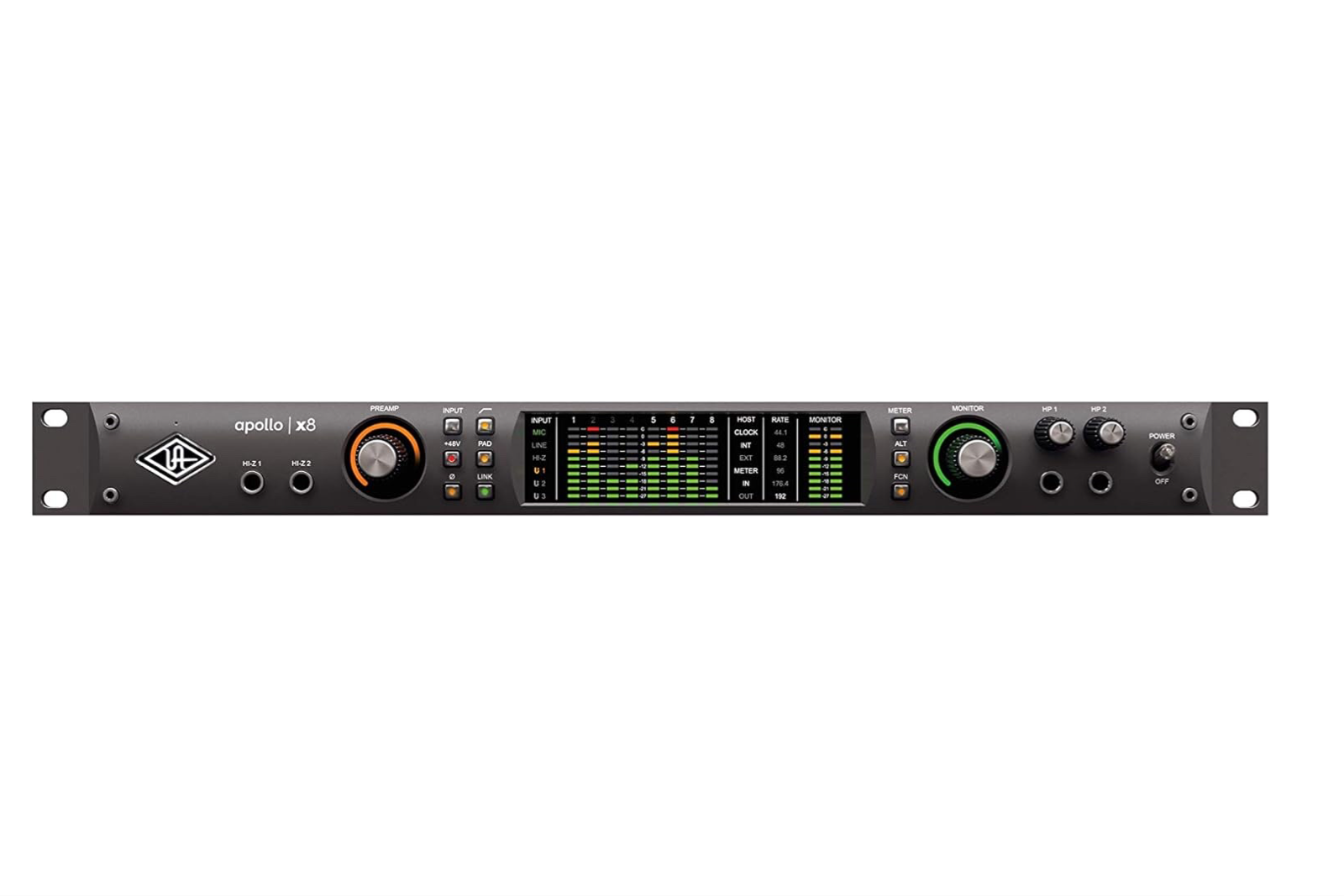
Universal Audio Apollo x8 Heritage Edition
Premium interface opulence
The Universal Audio Apollo x8 audio interface is for those looking for a professional piece of recording equipment and are comfortable spending money doing so. With near-zero latency, 4 Unison-enabled mic preamps and over $2000 worth of additional software, this audio interface will perform in any studio around the world.
- The best quality audio you're likely to get
- Near zero latency recording
- Over $2000 worth of additional software
- Out of reach for some
The Apollo x8 audio interface is all about performance and if you rely on an interface as your profession, it won't let you down. Powered by Thunderbolt 3, the Apollo x8 is capable of industry-leading 24-bit/192kHz conversion, meaning your tracks are going to sound as authentic as possible whilst recording at home.
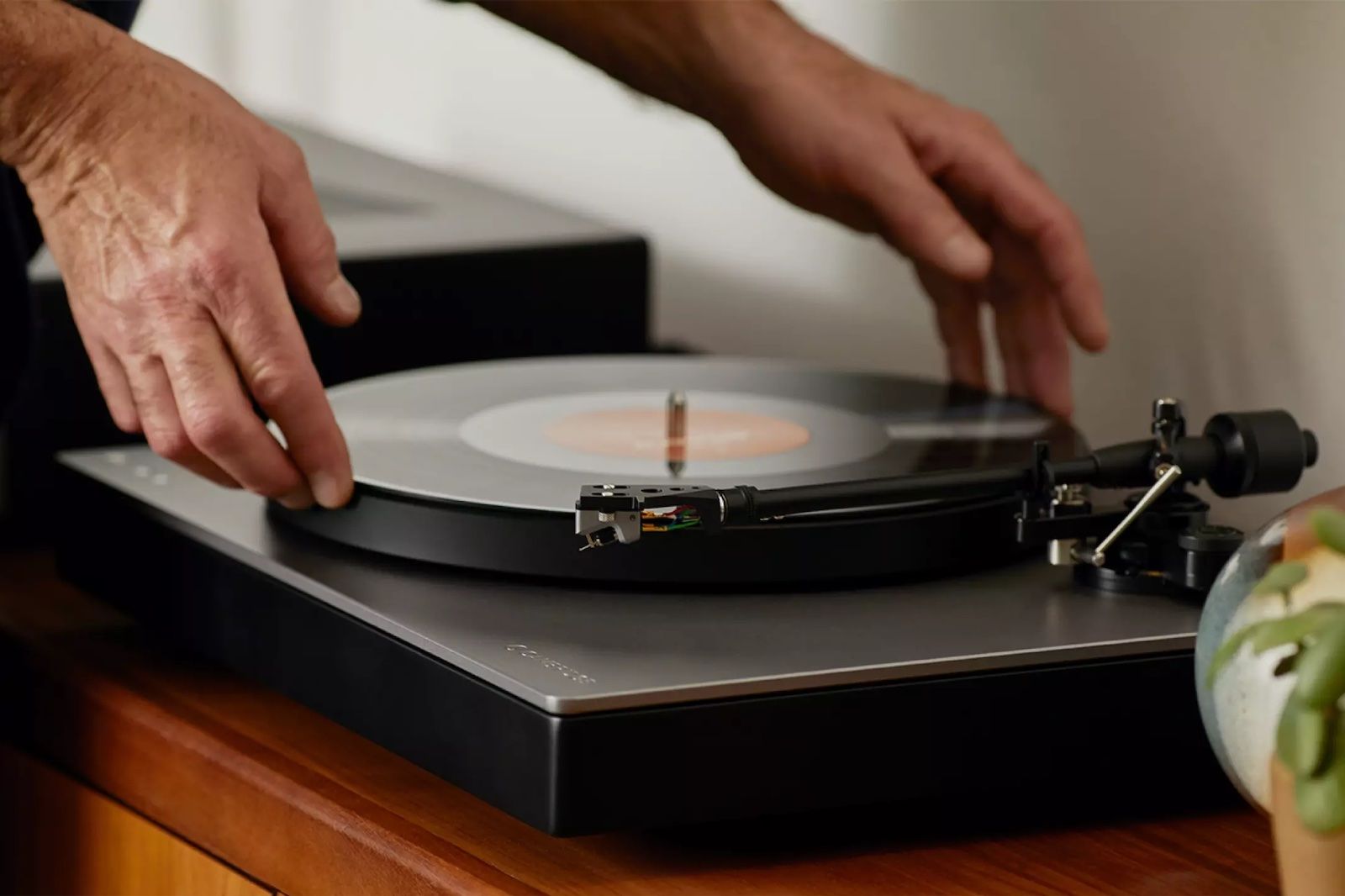
4 best products every vinyl novice should have in their setup
Based off my record player expertise, these are the 4 accessories you'll want to build your vinyl set-up.The four Unison-enabled mic/line preamps are capable of driving fully authentic preamp emulations, allowing you to achieve instantly recognizable tones at the flick of a switch. The free software that Universal Audio gives with the Apollo x8 interface is nothing short of amazing. The Realtime Analog Classics Plus UAD plug-in bundle, alongside their proprietary Luna digital audio workstation, amounts to over $2300 of free software included.
Rest assured about longevity with the Apollo x8 - it's stackable. You have the flexibility to combine up to four Thunderbolt-equipped Apollos for future expansion needs. Lastly, an unsung benefit of choosing a Universal Audio device is their fantastic customer support. Take it from us, they are there to help if you run into an inevitable conundrum whilst running studio equipment, that alone is almost priceless.
The Bottom Line: What is the best audio interface overall?
Universal Audio's Apollo Twin X emerges as our top pick among audio interfaces. Steeped in musical recording heritage and revived in 1999 by Putnam's sons, the Californian brand has a legacy tied to music icons. With premium A/D and D/A conversion, classic mic preamps, and over $1,300 worth of free plug-ins including renowned brands like Marshall and Ampeg, it's a go-to for sounding professional instantly. While it might not suit beginners, for serious recording enthusiasts, the Apollo Twin X remains unmatched in quality and legacy.
How we select the best audio interfaces
Having worked in the music technology industry for over six years, I feel very well-placed to select the best audio interfaces currently on the market, especially after consulting with my fellow audiophile experts here at Pocket-lint. Every selection was made after having hands-on experience with the products, as nothing quite beats first-hand experience. We took into account specifications such as sample rates, conversion, ease-of-use, price, number of inputs, build quality and any additional software.
How many inputs and outputs do I need for my audio interface?
How many inputs and outputs you need on your audio interface will largely depend on the type of recording you are planning on doing. If you are a solo artist who is planning on recording an instrument one step at a time, one or two inputs will do the job. More inputs allow for multiple microphones to be recorded at any given time, so if you're planning on recording bands, or larger groups of musicians, the more inputs the better.
Be on the lookout for interfaces that can be expanded. Intermediate to professional interfaces should have an ADAT/SPDIF extender that will allow for additional products to be attached to your interface. If you are unsure about the number of inputs you need, purchasing an interface that can be expanded will really increase longevity.
Outputs are a little more straightforward and will usually depend on what type of connection your studio monitors require. Some interfaces will have RCA outputs to connect to your speakers. However, most modern interfaces will come with 1/4-inch jack outputs.
Are more expensive audio interfaces better?
As the old adage goes, you get what you pay for. We've found that this sentiment rings true in the world of audio interfaces and more expensive interfaces will be equipped with better quality preamps, have better conversion, offer crystal clear audio signal and have more inputs and outputs, to name but a few advantages.
However, this doesn't mean you have to pay four figures to get a great sound recorded. If you have a slightly tighter budget, there are plenty of fantastic options, like the M-Audio M-Track Solo and the Audient iD4 MKII. Take into account your budget, how many additional features you're likely to benefit from and where you are in your recording career. If you do, you could end up with a brilliant, budget-friendly interface that ticks all of your boxes.
